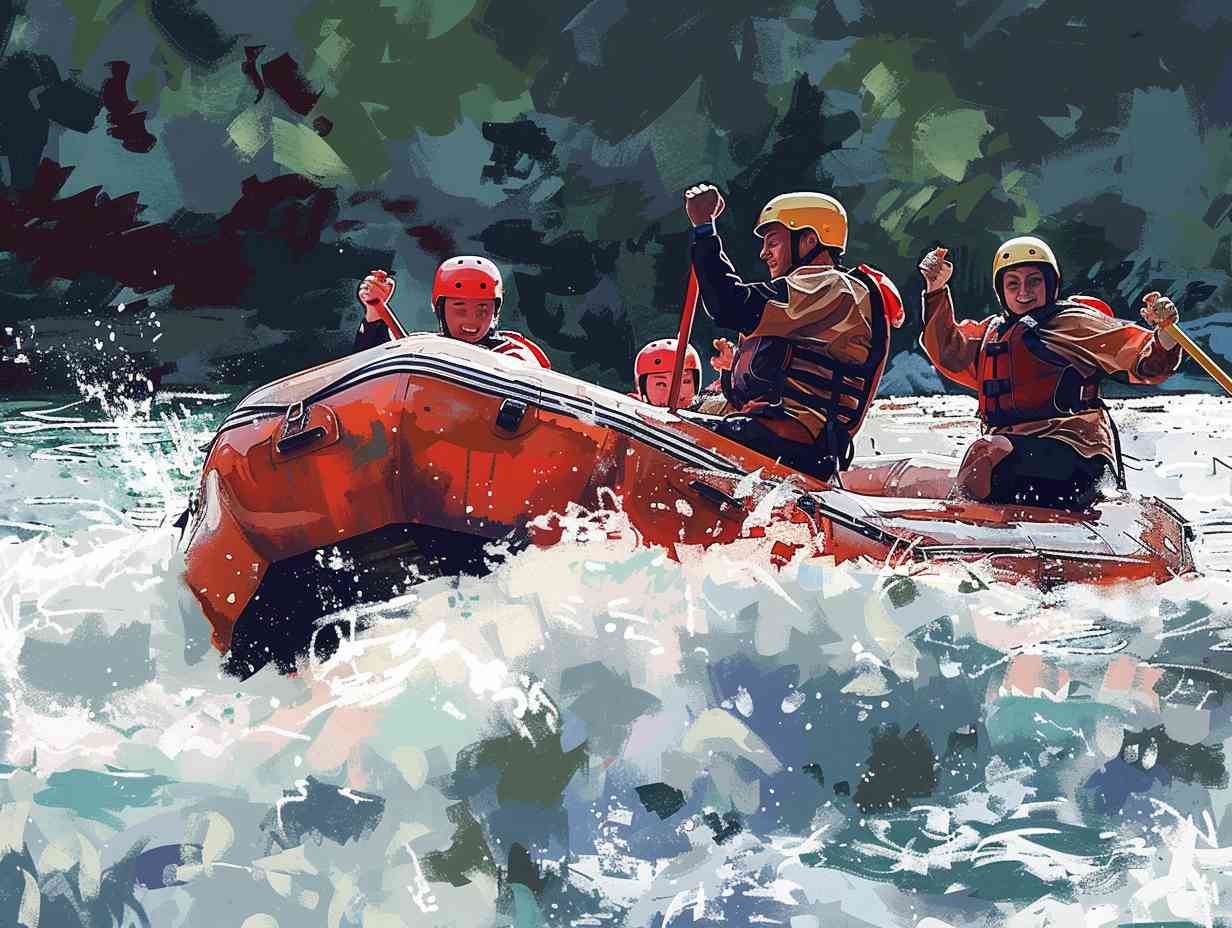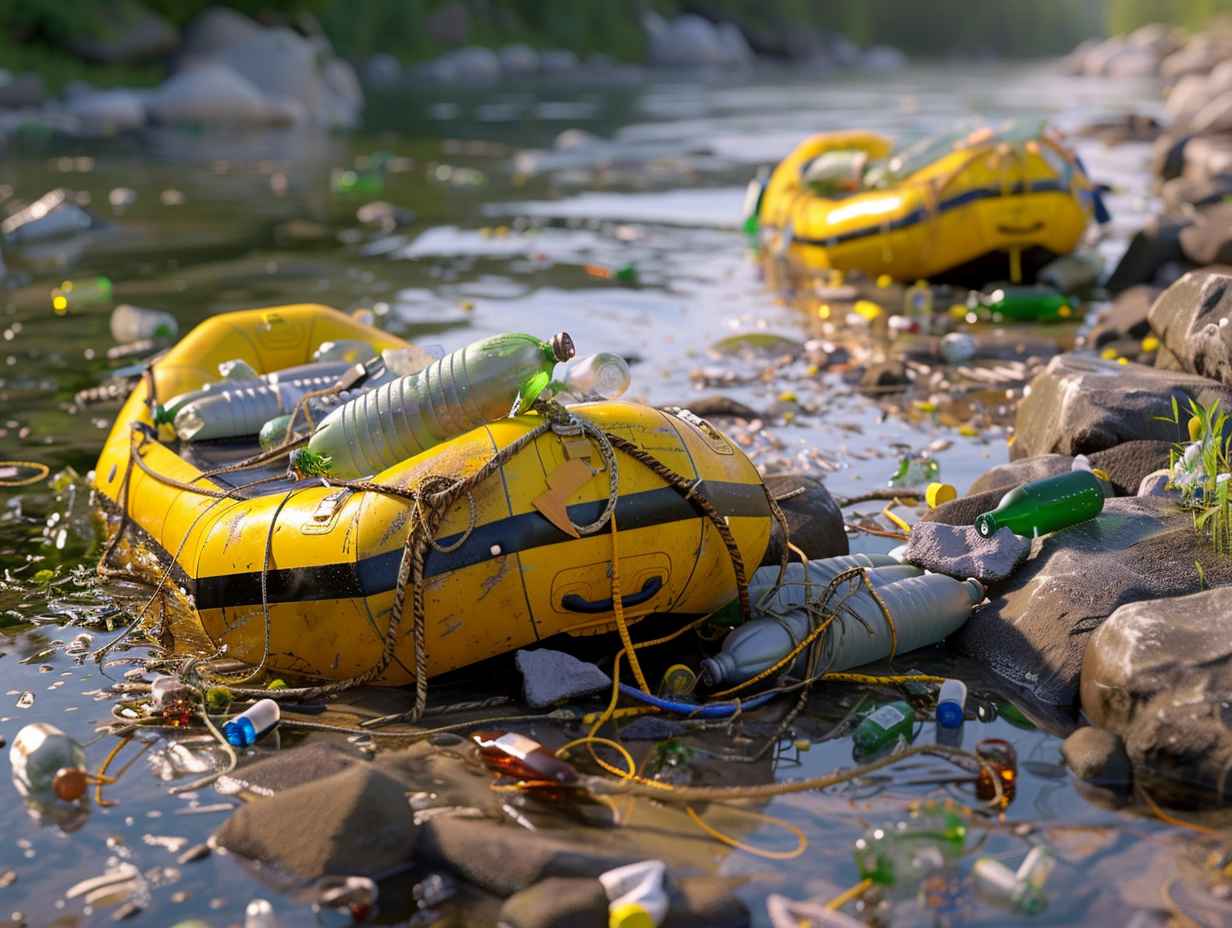
Advanced Rafting Techniques
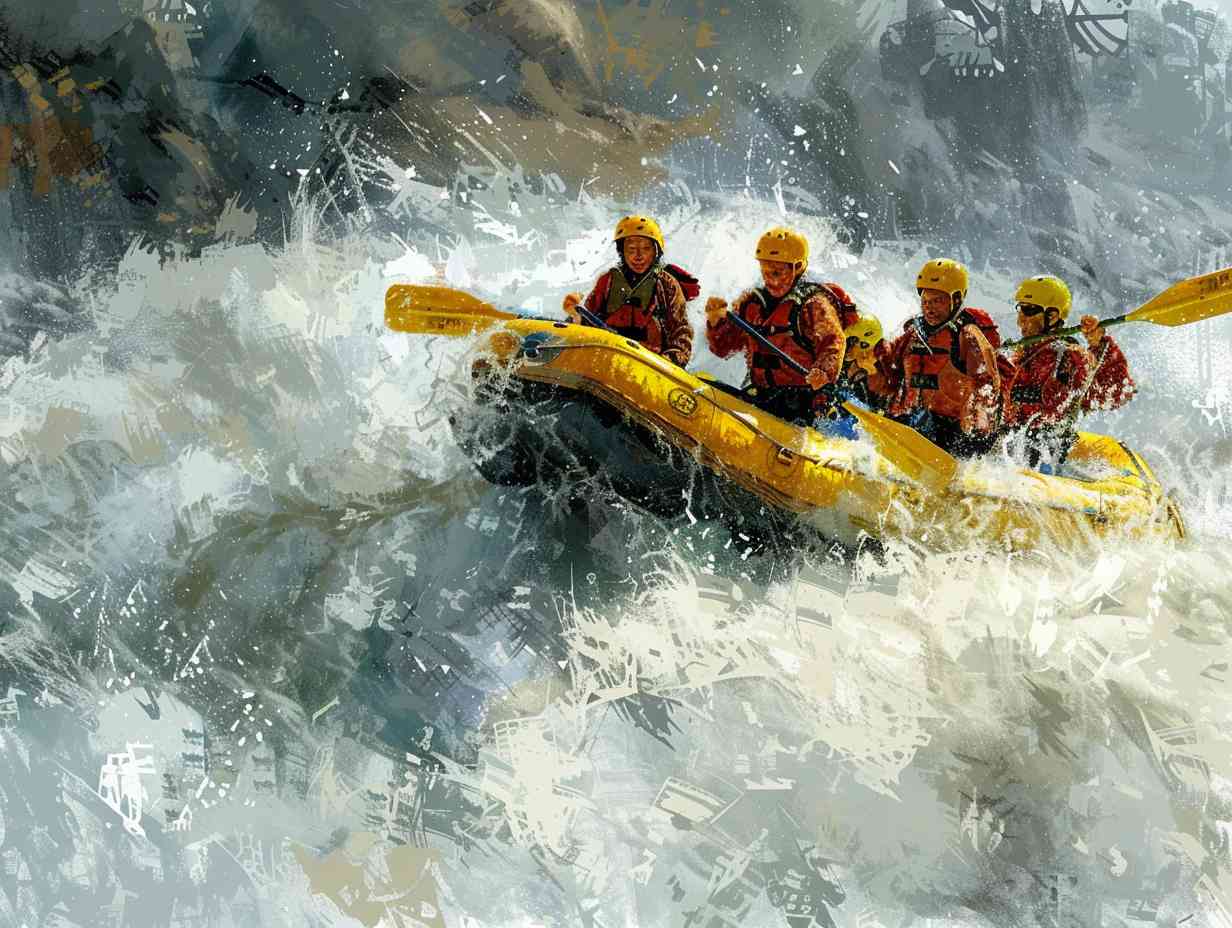
Ever wondered if mastering advanced rafting techniques could truly elevate your river navigation skills?
As you navigate the unpredictable waters, you may find yourself faced with challenges that require finesse and precision.
The key lies in honing your abilities to not just conquer the rapids but to dance with them.
By exploring the intricacies of paddle techniques and understanding the nuances of eddy turns, you open up a world of possibilities on the river.
Stay tuned to discover how these advanced skills can take your rafting adventures to the next level.
Key Takeaways
- Master paddle techniques for precision and control.
- Perfect eddy turns for navigating river currents effectively.
- Read rapids to maneuver with power and stability.
- Learn obstacle techniques like High-Siding and Ferrying for safe passage.
Paddle Techniques for Precision
To navigate through narrow channels and hit precise spots on the river, mastering paddle strokes is crucial. Proper technique guarantees you can propel the raft exactly where you want it to go. Start by gripping the paddle correctly, with one hand on the top and the other midway down the shaft.
Use your torso to power the stroke, rotating your body as you pull the blade through the water. Keep the paddle close to the boat to maximize control and efficiency. Remember, the angle of the blade and the depth of your stroke influence the direction and speed of the raft.
Practice different strokes like the forward stroke, sweep stroke, and draw stroke to become proficient in maneuvering through challenging waters.
Mastering the Art of Eddy Turns
Master your rafting skills by honing the technique of executing precise Eddy Turns, essential for maneuvering challenging river currents with finesse.
To perform an Eddy Turn, approach the eddy line at a slight angle and paddle with precision to enter the eddy. Once inside, use a combination of forward and backward strokes while leaning towards the eddy to maintain control. Keep your focus on the downstream current to anticipate when to exit the eddy smoothly.
Importance is important; push off the eddy line with a strong forward stroke to re-enter the main current seamlessly. Practice these turns in different eddies to enhance your ability to navigate tight spots and swiftly change directions on the river.
Reading and Riding the Rapids
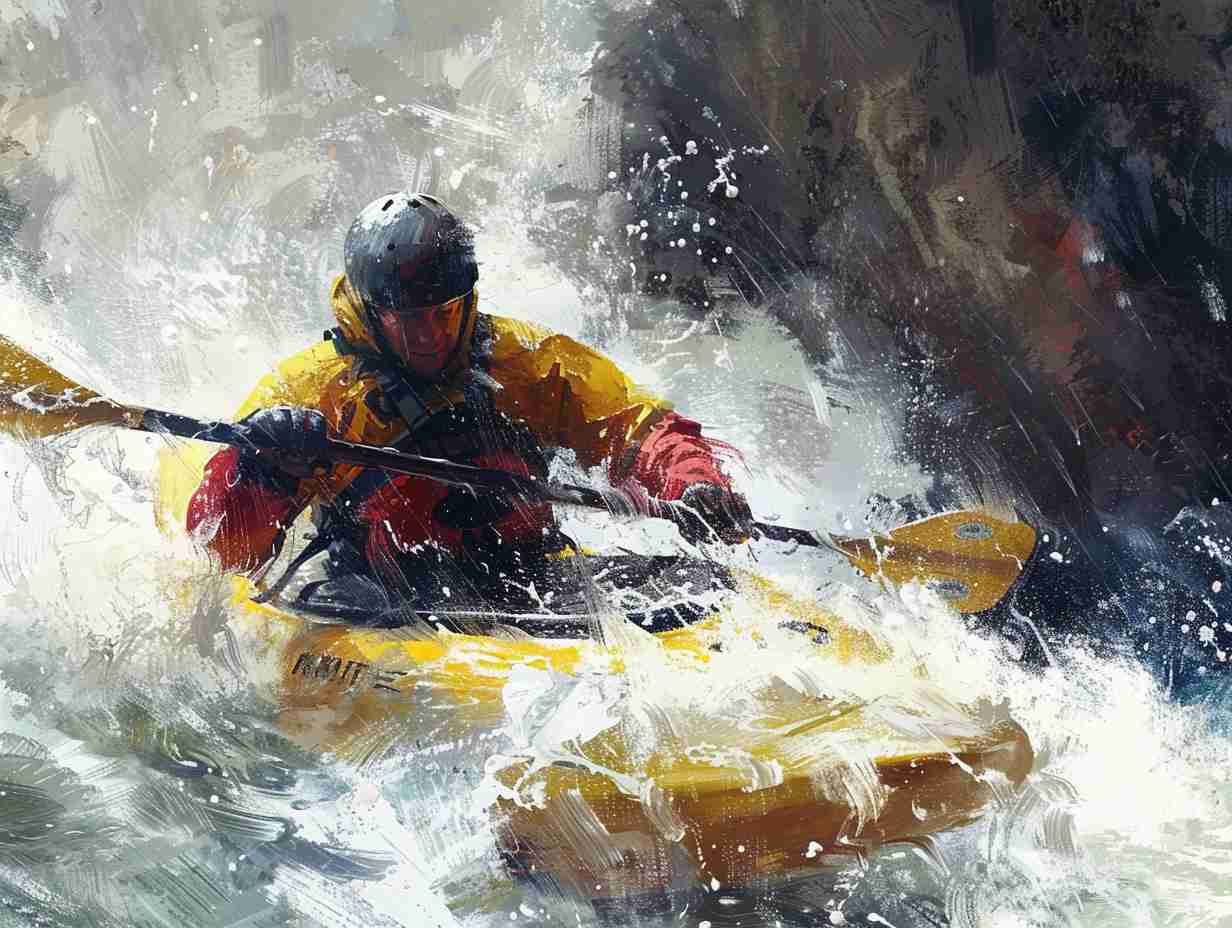
Navigate the turbulent waters by honing your skill in reading and riding the rapids with confidence and precision.
To read the rapids effectively, focus on identifying key features such as waves, rocks, and currents. Watch the movement of the water to guarantee obstacles and choose the best route.
When riding the rapids, maintain a steady posture and use powerful paddle strokes to navigate through the rough waters. Adjust your position in the raft to distribute weight evenly and increase stability.
Stay alert and responsive to the changing conditions of the rapids to confirm a safe and enjoyable ride.
Maneuvering Through Complex Obstacles
Honing your agility and adaptability is key when maneuvering through complex obstacles while rafting. To navigate challenging terrains successfully, you must be quick to react and adjust your course swiftly. Here are some essential techniques to help you tackle complex obstacles on the river:
| Technique | Description | Benefit |
|---|---|---|
| Eddy Turns | Using river currents to turn the raft | Allows you to change direction efficiently |
| Peel Outs | Swiftly exiting an eddy into the current | Helps in moving between calm and rapid waters |
| High-Siding | Tipping the raft to avoid obstacles | Prevents the raft from capsizing |
| Ferrying | Moving the raft sideways across the current | Aids in reaching desired landing spots |
| Back-Ferrying | Moving the raft backward | Useful in avoiding obstacles or eddies |
Safety Measures in Advanced Rafting
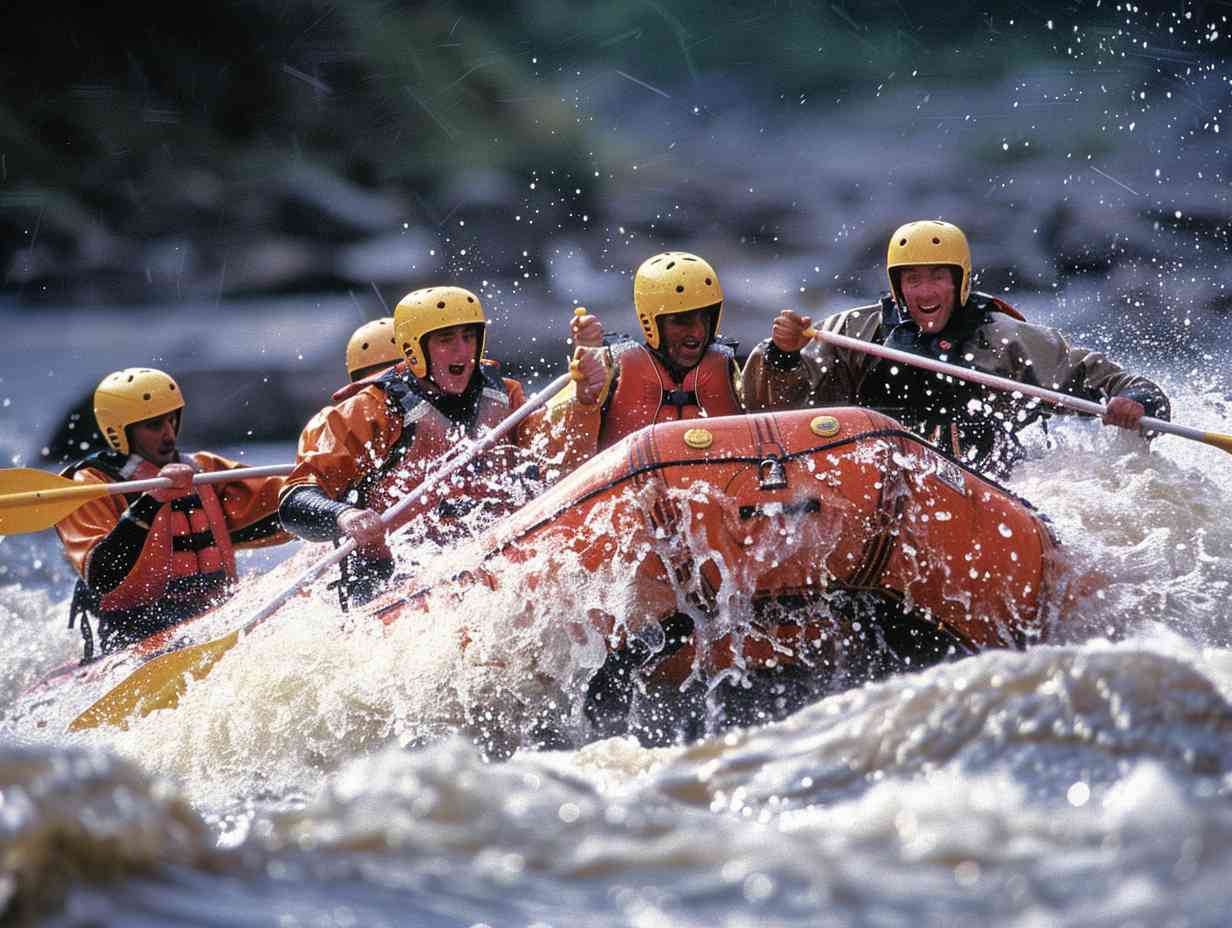
To enhance your safety during advanced rafting expeditions, implementing proper precautions and equipment is essential. Before heading out on the water, make sure everyone in your group wears a well-fitted, Coast Guard-approved personal flotation device (PFD). Familiarize yourself with the river’s classification and potential hazards by studying maps and consulting with experienced guides.
Establish clear communication signals with your teammates and guide to coordinate maneuvers effectively. In case of a capsize, practice swift self-rescue techniques and know how to assist others. Carry essential safety gear such as a throw bag, first aid kit, and emergency whistle.
Regularly inspect your raft for any signs of wear and tear to prevent equipment failure during your adventure.
Frequently Asked Questions
How Can I Improve My Endurance and Strength for Advanced Rafting?
To boost your endurance and strength for advanced rafting, mix up your training with cardio, strength exercises, and core workouts. Incorporate activities like running, swimming, and circuit training to build the stamina and power you need.
What Type of Gear and Equipment Is Necessary for Advanced Rafting?
To tackle advanced rafting, you’ll need essential gear like a sturdy helmet, PFD, and appropriate footwear. Quality equipment is important for safety and performance on challenging waters. Invest in reliable gear to guarantee a successful adventure.
Are There Any Specific Techniques for Navigating Through Narrow Canyons or Gorges?
When maneuvering through narrow canyons or gorges, focus on precision paddling and quick reactions. Stay alert for obstacles and use eddies to your advantage. Keep your raft balanced and work as a team to maneuver effectively.
How Can I Anticipate and Navigate Unexpected Obstacles in the River?
To anticipate and navigate unexpected obstacles in the river, stay alert, read the water ahead, and communicate with your team. Keep a firm grip on your paddle, adjust your course swiftly, and trust your instincts to navigate safely.
What Are Some Common Mistakes That Beginners Make When Transitioning to Advanced Rafting?
When moving to advanced rafting, beginners commonly make mistakes like underestimating the power of the river, losing focus on technique, and not communicating effectively with the team. Stay vigilant, hone skills, and cooperate for success.
Conclusion
Now that you’ve learned advanced rafting techniques, remember that practice makes perfect.
Did you know that over 50% of rafting accidents occur due to improper paddling techniques?
Stay safe on the water by honing your skills and always following proper safety measures.
Happy rafting!
More information about Advanced Rafting Techniques
Affiliate information declaration: We may earn revenue from the products referred on this page and participate in affiliate programs.

